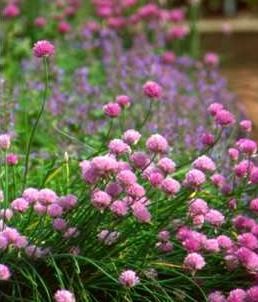|
Gardens Ablaze |
|||||||
|
|
COTTAGE GARDEN BASICS
|
||||||
|
Related Topics Effective use of Color in the Landscape Installing and Maintaining a New Perennial Bed Home Landscaping Ideas Introduction Site Map
Home
|
Cottage Gardening is a gardening style in which we can bend the rules. Some of the most memorable gardens are of the Cottage Garden type, because of the riot of color and the usefulness of the plantings. There's a surprise every few feet in a well-done Cottage Garden, and this makes it one of the most distinctive of the gardening styles from which we can choose. But remember, the most important ingredient in a spectacular Cottage Garden is the gardener, and despite the carefree look of the finished product, a Cottage Garden can be one of the more labor-intensive gardening styles we can choose, and it is never really finished because there is always a new plant or cutting right around the corner. Amazing Cottage Gardens don't happen overnight, either. Though a first year Cottage Garden can be beautiful, subsequent years will see it filling in with volunteer seedlings and new additions for that truly lush look that makes it a really special place. In past times, Cottage Gardens met real needs for people who didn't have unlimited space for the plant types they needed. They would mix flowers, vegetables, herbs, and fruit trees in tiny spaces and use them for medicine, food, fragrance, and dyes. No space was wasted, even along walls and fences, where they grew climbing roses and fruiting vines. Today, we have the drug store and grocery store right down the street, and that frees us up to choose from an almost unlimited variety of plant materials depending on what we want to experiment or play with this season. The first step in creating a Cottage Garden is to take stock of the house, the soil conditions, and the amount of light the area gets. Though the idea is to grow a wonderful array of different types of plants, they should all meet the same basic growing requirements lest you end up with a hodgepodge of scraggly unhappy underperformers. Amending the soil with compost is always a good idea, as is a good layer of mulch throughout the season. Deciding what to plant is the fun part, but plants can be costly, so never forget to ask for cuttings or divisions from other gardening friends, and do consider starting plants from seed. There is nothing more satisfying than a garden full of plants grown from seed, though the gratification is not instant except maybe for the pocketbook. The object is to meld the scene into the setting of the house - to create a sense of "place." Most Cottage Gardens include a few staples, such as some sort of seating in a peaceful part of the garden, and an arbor for fragrant climbers. If you can fit one in over a main entryway, all the better. Trellises, garden ornaments, sculptural rocks, rock walls, picket fences, and even small ponds are all fair game for a Cottage Garden. This is a chance to let the world see your creativity so by all means, be imaginative! The rest of this section is devoted to the plants of the Cottage Garden. Do seriously consider growing many different types of plants including vegetables, herbs, perennials, vegetables, vines, roses, and ground covers, but again, pay attention to providing similar height, light, and soil requirements when placing them. My purpose is to provide lists of as many suitable plants as possible for this page, and I have linked many that are already profiled on this site for further reference (no underline means the plant has not been profiled yet). These lists will absolutely grow longer with time as the site grows. Some plants have tall and short varieties, so pay attention when shopping, as these are only general guidelines. For more plant ideas, be sure to visit the colorful and informative vendor sites listed throughout these pages.
|
|
|||||
|
Gardens Ablaze |
|||||||
 You
know who you are. I am one too. We are those who have read all
the landscaping tips and even though we know better, we still gleefully
rush to the store in the spring and grab whatever we see that pleases us,
regardless of whether we have a plan or a place in mind for it in the garden.
We are the Cottage Gardeners of the world - the free thinkers who are not
afraid to mix plant materials and experiment with color and form.
You
know who you are. I am one too. We are those who have read all
the landscaping tips and even though we know better, we still gleefully
rush to the store in the spring and grab whatever we see that pleases us,
regardless of whether we have a plan or a place in mind for it in the garden.
We are the Cottage Gardeners of the world - the free thinkers who are not
afraid to mix plant materials and experiment with color and form.